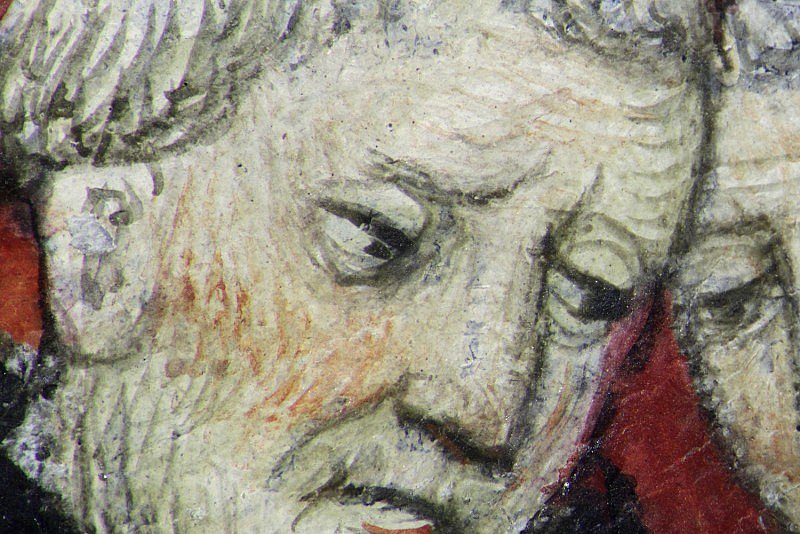Painting the flesh
Artists' Techniques
The Mazarine Master applied flesh tones over a light pink base layer, containing lead white and variable quantities of vermilion. He used a range of earth pigments to delineate shadows, and short parallel strokes of vermilion red to define noses, cheeks and mouths, and often eyebrows and foreheads. Facial features were further outlined in brown or black.


Monk writing in a manuscript, with four monks standing opposite (Book 10: On matter and form)
The monk seated at his desk, pen in hand, is probably intended to represent the translator, Jean Corbechon, who was an Augustinian. He is shown with four monks who are similarly attired in the black habits worn by monks of the Order. The word ‘root’ (‘red’ in Middle Dutch), hidden underneath the red background, is visible in the infrared image (see Infrared Layer). This one-word instruction was written by the Mazarine Master to inform his assistants that they should decorate the background with a foliate pattern of red on red. The same background motif occurs on fol. 174r. Similar instructions have not been found beneath the paint layers of the plain red grounds in the manuscript (e.g. fol. 296v), suggesting, perhaps, that the word ‘root’ was used to indicate this particular pattern of red scrolls of acanthus on a slightly darker red ground.
